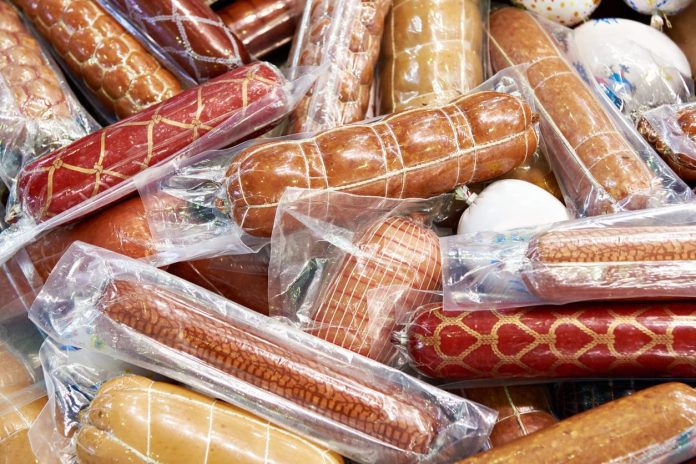Modern wrappers serve as a strategic tool for any business. Note that multiple variations of wrappers are required to pack meals. Depending on the physical properties of products, a suitable cover is selected. For example, covers for cakes must keep their shapes perfectly to prevent spoilage of the appearance, while wrappers for salted food should be resistant to the influence of aggressive solutions.
Below, we’re going to consider wrappers for cooled or frozen meals in detail. You’ll find out the top-rated materials to cover frozen meals and products and increase sales through proper wrapping.
Essential Elements in Frozen Product Covering
Covers should possess certain physical characteristics. These are:
- Moisture resistance. Frozen products tend to contain moisture. Resistance to liquids is applicable on both sides. That is, a proper wrapper should prevent external water from entering the cover, as well as not let internal liquids leave the package.
- Easy sealing. Covers must be sealed durably to prevent accidental opening. At the same time, they should be opened easily, ensuring comfortable use of wrappers.
- Endurance to temperature extremes. Since frozen food is stored under a temperature of -25 or lower, materials must be resistant to temperature extremes and preserve their physical strength and properties, regardless of the change in temperature.
According to these criteria, a wide range of options are used to pack frozen meals. The list starts from flexible pouches and goes up to wax-coated paper. Elastic wrappers come as the most popular category among the mentioned ones. Its popularity is explained by versatile opportunities and multiple benefits.
If you want to order flexible bags for frozen food packaging, visit Uniflex. The company is an expert in the production of flexible covers for different categories of products. Skilled managers will help you pick quality solutions for your needs.
Various Kinds of Cooled Meal Wrappers
Below, you’ll find typical types of frozen food packaging:
- Flexible Bags. These containers are manufactured from food-grade foils, plastics and other compounds. They are safe for edible products and preserve their physical barrier under any condition. Such pouches can be used for packing all sorts of products, such as vegetables, berries, semi-finished meals, meat, fruits, etc. Such wrappers feature high durability, sustainability, easy shipment, and comfortable handling.
- Shrink Film. This wrap is the second most popular type of containers. It is commonly made from polyolefin, which is safe for humans and does not emit poisonous chemicals under low temperatures. Such wrappers are suitable for pizzas, cakes, and fruits.
- Wax Coated Cardboard. This option is the best choice for pre-made meals that need heating before consumption. Such containers are resistant to heat and do not emit toxic substances under the influence of microwave waves. Thus, such products as pizzas, Chinese pre-made food, etc. are packed in containers.
- Lidding Films. They are used to cover different sorts of containers filled with food. In most cases, they are transparent or can be covered with marketing info. They are safe and FDA-approved.
- Aluminum. This material is used to produce foil pans filled with pre-made food. Such pans are also suitable for heating in microwaves. Such wrappers are sustainable if they are washed from grease and food particles.
- Glass. The material comes as the least applicable solution for frozen food. In practice, the material is bulky, heavy, and vulnerable to breaks.
Some containers can create multi-material structures, comprising several options. For instance, aluminum pans are usually covered with shrink or lidding films.
Elastic Wrappers: The Best Option for Frozen Meals
When compared to other types of packages, flexible covers are priority since they occupy less place, easier for transportation, and have advanced usability.
Below, we mention the main features of flexible wrappers that determine their popularity. Here are the most significant benefits:
- Material integrity and tolerance at low temperatures. Flexible covers do not lose their physical properties under temperature extremes. When they are frozen, they preserve the barrier and demonstrate perfect resistance to all environmental factors.
- Easy storage and stacking. Such solutions are flexible, lightweight, and compact, which means that they can be easily and quickly shipped. When storing or placing them on store shelves, they occupy less space. You can buy from plastic trays for easy storage.
- Cost-effectiveness. The manufacturing process requires less energy, materials, and natural resources, which decreases the amount of expenses spent on wrapper production.
- FDA-approved substrates. Materials and containers are guaranteed to be safe for humans, not to emit toxic chemicals, and do not interact with food during storage.
The storage of frozen products has its specifics due to extremely low temperatures and related options. Flexible covers are ready to satisfy all these conditions and preserve durability, ensuring meal protection. Thus, they are commonly used in the food industry to wrap frozen products.



































